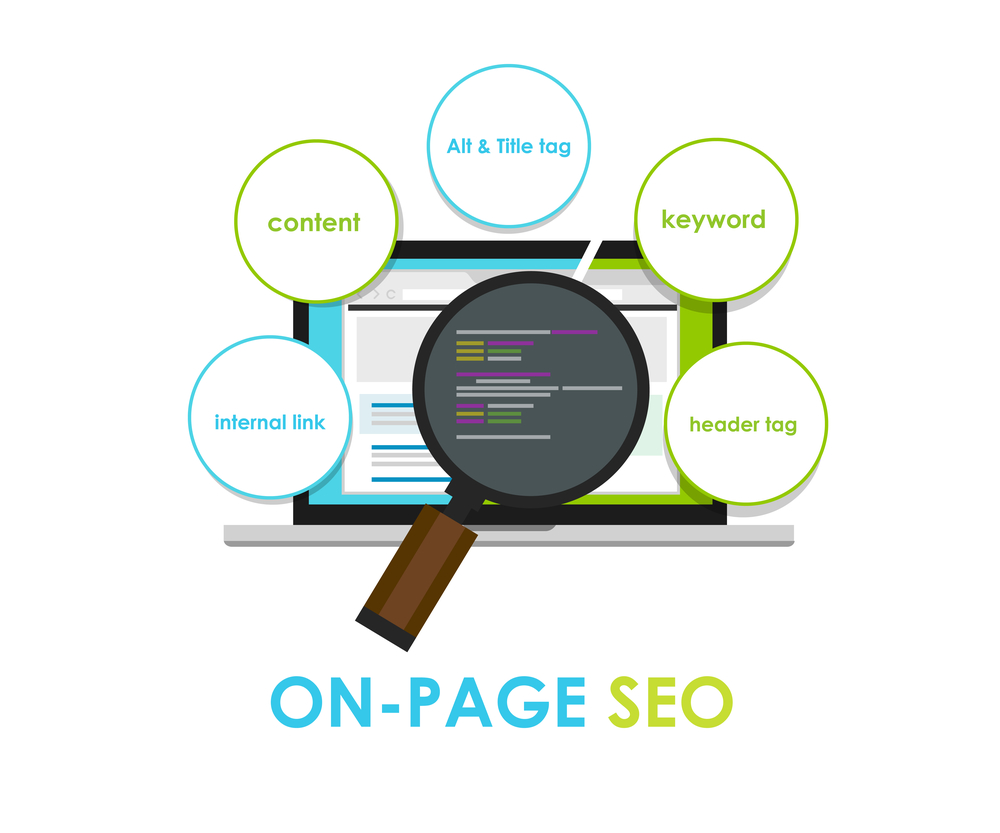Over the past number of years, the rules for on-page SEO have changed significantly as Google makes the attempt to ensure that they’re providing the best results. Currently, a standard search result page displays pages that don’t necessarily have the exact match query—or keyword—in their title tag or meta description.
Every SEO strategy is centred on ranking as highly as possible on the search engine results pages. To make this happen, web designers and digital marketers all try to design as well as develop a website which will appeal to Google’s secret algorithm which changes on a frequent basis.
Google’s algorithm looks at a number of issues when determining the ranking of websites. These can be divided into two categories which will determine the ranking of your website:
- On-page factors, as well as
- Off-page factors.
In this article, we’ll take a closer look at on-page SEO.
The term ‘on-page SEO’ refers to the practice of optimising specific web pages in order for them to rank higher as well as earn more appropriate traffic in search engines. ‘On-page’ refers to both the content as well as the HTML source code of a page which can be optimised.
Make your website accessible to search engines
If a search engine is unable to find your website, you mind as well not bother with optimising your site at all. So, before you take any other action else, make sure that your site is crawlable.
If you are making use of a content management system (CMS) such as WordPress, it is possible to quickly double-check that your website is crawlable by logging into your WordPress portal and selecting ‘Privacy’ under the Settings tab. When you have accessed the privacy settings ensure that you’ve selected the ‘Allow search engines to index this site’ option is selected. You’ll find this option under the heading of Site Visibility.
Confirm that your website is being crawled by logging into Google Webmaster tools and checking this way.
Include your keywords in the body of your text
Do this at least four times. If you need to rearrange your keywords in order to make them fit into natural text for better flow, do so. Google is becoming increasingly contextual. This means that a strict keyword string is not required for all four instances.
Make sure that all images have alt tags
If you have images, ensure that your keywords are in the alt tags. In addition, name the image in order to match your keywords, for instance keyword.jpg.
If there isn’t an image in your blog post, think about inserting one as this will assist you to rank highly and can dramatically enhance the readers’ ability to remember the information.
Use exact keywords in the page title
The page title is what is displayed in the tab of the web browser that you are making use of. If you hover over the tab, the full page title should be displayed.
Preferably, have your page title set to: “Exact Keywords | Your Brand Name”. It’s best practice to make use of your exact keywords and utilise these at the front of the title text.
Be descriptive in your meta description
The meta description appears after the title of your page in the search engine results pages. A great meta description can improve the search traffic which is directed to your site. It’s also essential for your keyword to appear in your meta description. In addition, the description must not exceed 156 characters in length.
As you can see from this article, on-page SEO is about more than just putting a few keywords into meta tags. Proper on-page SEO is about fulfilling digital search intent as well as giving searchers what they want. This is the most essential step. If you don’t get this right off, no amount of optimisation will assist you with getting the rankings that you want to have for your website.

